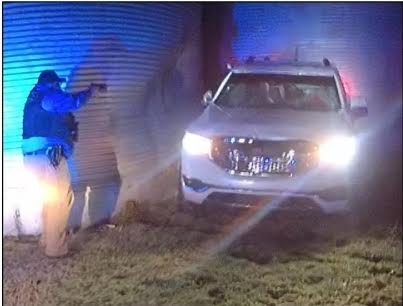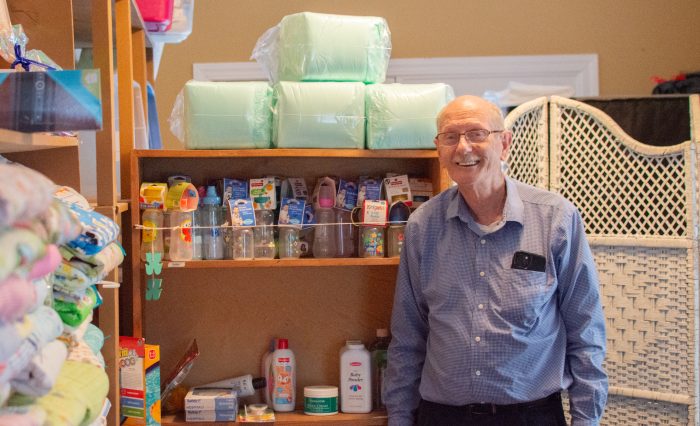Historic Quonset huts demolished
Published 12:00 am Tuesday, December 17, 2002
Miranda Pederson/Daily News
Joe Marshall leaned against a lamppost and watched as heavy equipment crushed a piece of his past and a part of Bowling Greens musical history. His right hand clutched a baseball cap behind his back as he rubbed his left hand through his thin, white hair. Marshall had gone to get the cap to protect his scalp from the sun, but now he took it off, almost as if he were paying his respects at the funeral of an old friend. The Quonset Auditorium best known for bringing a racially mixed crowd together to listen to the music of Bowling Green and nationally known artists during the waning days of segregation and the smaller Quonset hut were demolished Thursday to make way for Bowling Green Municipal Utilities upcoming water treatment plant. Marshall built both of the buildings. Ive already shed tears over this today, Marshall said, his eyes bright with more. It has been rough. I didnt mean for it to be this rough. The utility bought the land and buildings for $775,000 in August for a long-planned expansion of its nearby water treatment plant. Ground on the other side of the current plant was deemed too low for construction. An environmental assessment of the Quonset site found traces of oil that probably seeped through the septic system the structures share, according to BGMU. That will probably require four feet of soil to be dug out from under the building sites. It had certainly been a rough morning for Marshall. He and his band, The Rovin Ramblers, had performed outside the auditorium for footage for a documentary being shot for Amber Ridington, a folklorist/heritage consultant of Vancouver, British Columbia, when they were told to leave the property so demolition could begin. Marshall and the other Ramblers believing that they would be able to get momentos from the Quonset stopped playing and began gathering some of the glass blocks that were being taken out of the Quonsets front entrance. I wanted to clean them up real good, put a label on them and give one to each of the Rovin Ramblers, he said quietly. I dont know what I was going to say on the label something to remind them that we played here. As the elderly men were loading the blocks onto a truck belonging to one of the Ramblers, they said they were stopped by Bill Rabold of Rabold Industries, who told them to put them back because they may be contaminated. Rabold and BGMU General Manager Larry Miller had been standing nearby with Bowling Green Police Department Sgt. Mark Anthony while the Ramblers were performing. Marshall was reluctant to give up his pieces of history, so Rabold began taking the blocks from the truck with his bare hands and tossed them to the ground, breaking a couple of them. Dont break those! Marshall cried. Those are mine!Anthony told Marshall that he didnt want to arrest him. I was upset, mad and really wanted the officer to arrest me, Marshall said. After more discussion, it was decided that Rabold Industries would clean the blocks, have them tested and return them to Marshall. We want to accommodate him as best we can, Miller said. Its necessary for us to (demolish the buildings) as far as planning for the future water supply. Theres soil contamination. We plan to have a fence to commemorate the history of the Quonset hut. But entrepreneur David Garvin, who restored College Street Bridge, said the huts could have been saved. In fact, he was planning to approach the BGMU board about taking down the buildings and moving them to a different location in the Shake Rag district. He found out about the demolition after he drove by and saw that the buildings were destroyed. I had figured out a way to move them. It wouldve been work, but it wouldnt have cost anyone a cent, he said. I restored (College Street Bridge) and one on Old Richardsville Road and they cost a lot more than moving the huts wouldve cost. Rabold was instructing workers just before demolition to take the blocks and a sheet of glass reserved for Marshall. The men picked up the items with bare hands and placed them in black bags marked Danger. Theyre treating them like they were rattlesnakes, Marshall said of the mens handling of the blocks. Marshall watched as the men drove away with the items that reminded him of days when legends such as Chuck Berry, Mahalia Jackson, B.B. King, Jackie Wilson and Ike and Tina Turner played at the now fallen auditorium. I dont like it because of the historical perspective, Dawnelle Portmann of Bowling Green said. Its too bad because it could have been preserved. There arent many sites like this left. Portmann, who is Marshalls daughter, said she didnt realize the historical significance of the Quonset until she was an adult. My father was out of this before I was born, she said. It would have been fun to be a part of it. Jonathan Adams, 14, of Bowling Green was also sorry to see the huts being torn down. Historic buildings are his hobby. This is a beautiful piece of property and one of the top 10 endangered historical buildings in Kentucky, he said. Everything about the Quonset is so cool. Its stupid to tear it down. If theyd let me, Id tie myself to the basket of the heavy equipment used to demolish the structures. Jimmy and Phyllis Nalley also watched the demolition. The couple had rented the second hut from previous owner Bale Oil Co., before it was sold to BGMU. The Nalleys had opened River Walk Grill at the site. My husband put his whole soul into this place. We had only been open 15 days before we got a notice that we had to be gone in 30 days, she said. I dont like it a bit that theyre doing this. We spent every penny we had into that building over $92,000, Jimmy Nalley added. Now that both buildings are gone, people are going to forget about them. Marshall doesnt want people to forget about the buildings, either. He knows he never will.(Miller) told me he knew how I felt, he said. I told him, Youll never know how I feel.






